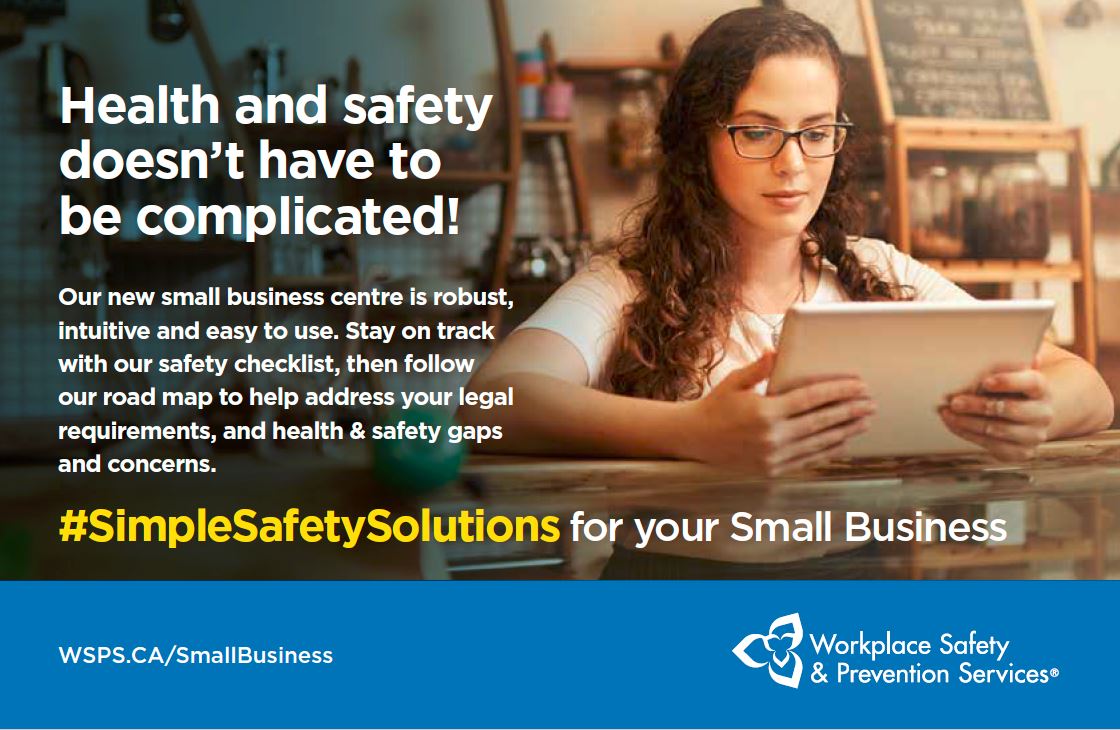Health & safety at a distance: how to keep lone workers safe
As a WSPS Consultant, Meron Samuel spends much of her time travelling to remote locations by car to deliver training. She is one of thousands of Canadians who work alone, some or all the time, without direct supervision on or off the worksite. They may deliver services and products to homes or businesses, work alone after hours, work at home, or travel to geographically remote areas.
These workers face all sorts of hazards, some of them high risk. It's your legal duty to protect them just as you do other employees, but how do you manage it all from a distance? Meron has several tips to help you keep your lone workers safe.
The first step
It all starts with a hazard assessment.
Understand the laws and standards that apply to the work your employee will be doing. Is working alone prohibited in some circumstances?
Identify and assess the hazards a lone worker may face with help from the worker, others who have done the job, and your joint health and safety committee. In addition to hazards related to equipment and processes, assess factors that could put the lone worker at higher risk, such as accidents, illness, fire or other emergencies, driving and weather conditions, sudden illness, and risk of violence.
Consider whether new, young or female employees face a higher risk.
Determine if the worker is suitable for the job. "Working alone can be very challenging," says Meron, "and not everyone can do it from a psychological health and safety perspective." The worker should also be medically fit to work alone.
Your hazard assessment will determine whether risks are too high or can be controlled, and what changes or preventive measures to put in place.
Essential control measures
These three control measures could make a difference between working safely and working at risk of injury or worse:
- Ensure regular communication between the supervisor and worker. This is critical. Have the worker check in at predetermined times set by the employer - more frequently if there are high risks, says Meron. During these calls, the supervisor can remind the worker about hazards to watch for and provide guidance in unexpected situations or emergencies. Cell phones are a must, and if a cell phone won't work at the lone worker's location, provide some other means of communication, such as a satellite phone or radio.
- Training. To minimize hazards, lone workers need the proper knowledge, skills and equipment, beginning with training in safe work practices, communication and emergency procedures. Depending on the risks, training might also focus on violence and harassment, defensive driving and vehicle inspection, and managing risks. If the hazard assessment calls for personal protective equipment, provide it, along with training in its proper use, fit and care.
- Emergencies. Equip lone workers with emergency contact numbers and locations, as well as first aid kits. Include a paper copy of the numbers in case cell phone service is interrupted and the worker needs to use a landline or even a pay phone.
Use automatic warning devices to alert you if the worker is in trouble or unconscious. If the risk of violence is present, provide a code word the lone worker can use to let you know. For remote workers, check weather reports in advance to gauge driving conditions and to ensure the worker takes clothing that has the proper degree of insulation for the temperature. A location tracker can guide you to a remote worker who is missing, lost or stranded.
Access free resources
Workplace Violence & Harassment Awareness (free eCourse)
Workplace Violence and Harassment Policy and Program Toolkit
Working Alone Hazards (posters)
Quick Safety Tips: What elements go into an emergency preparedness plan? (video)
Have health and safety questions? Please contact Denise Lam, WSPS Account Manager, Small Business at Denise.Lam@wsps.ca.
About Workplace Safety & Prevention Services (WSPS)
Workplace Safety & Prevention Services (WSPS) is a not-for-profit organization committed to protecting Ontario workers and businesses. A proud partner in Ontario’s occupational health and safety system and a trusted safety advisor since 1917, WSPS has a rich history of making Ontario workplaces safer. WSPS serves the manufacturing, agricultural and service sectors. WSPS offers unparalleled health and safety expertise, consulting, training and resources for businesses of any size. For more information visit WSPS.ca.
Copyright information
This article was prepared by Workplace Safety & Prevention Services (WSPS). At WSPS we are committed to helping businesses understand their risks and legal obligations to stay in compliance and build safer workplaces. If you would like permission to republish or use information in this article, please contact Jessica Bowes, Content Development Lead at jessica.bowes@wsps.ca.



%202023.png)


